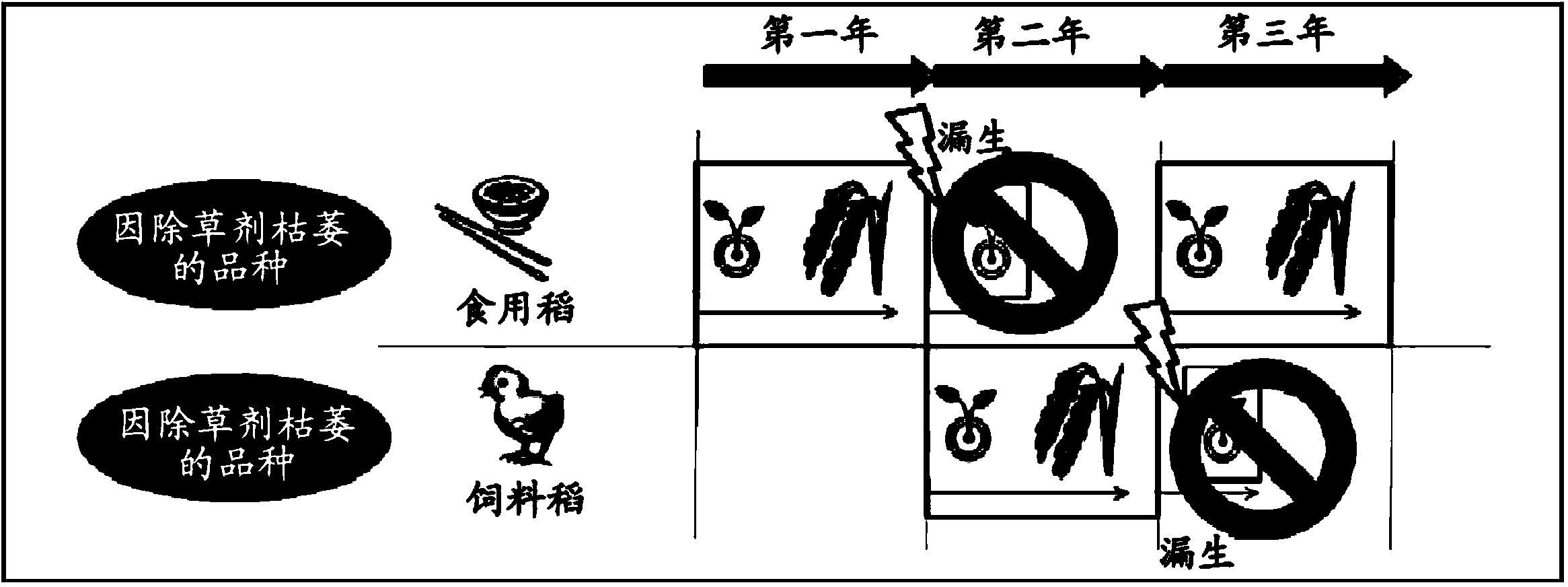Plant having improved resistivity or sensitivity to 4-hppd inhibitor
一种4-HPPD、抑制剂的技术,应用在对4-HPPD抑制剂的抵抗性或敏感性提高了的植物领域,能够解决尚未开发出等问题
- Summary
- Abstract
- Description
- Claims
- Application Information
AI Technical Summary
Problems solved by technology
Method used
Image
Examples
Embodiment 1
[0220] (Example 1) Specificity of 4-HPPD inhibitor resistance locus
[0221] Among japonica rice species, no species sensitive to BBC, which is a type of 4-HPPD inhibitor, has been known. On the other hand, BBC sensitivity sometimes appears in rice varieties bred by crossing japonica and indica.
[0222] Then, QTL analysis of the Koshihikari / Habataki chromosome segment replacement system (KHSL) using the BBC-resistant rice variety "Koshihikari" and the sensitive rice variety "Habataki" was performed as described above. As a result, only the short arm region of the second chromosome was replaced with Habataki-type KHSL (KHSL04) showing sensitivity, so it was clarified that the locus determining BBC resistance was located on the short arm of the second chromosome of Koshihikari (see Table 2). In addition, Table 2 shows a part of the results of the QTL analysis of KHSL. In addition, "A" in Table 2 indicates that the marker is derived from Koshihikari, and "B" indicates that the...
Embodiment 2
[0231] (Example 2) Identification of 4-HPPD inhibitor resistance genes
[0232]As described above, it was suggested by QTL analysis that the genes determining resistance to 4-HPPD inhibitors are present on the short arm of chromosome 2 in rice. Therefore, attention was paid to the gene presumed to be the iron / ascorbate-dependent oxidoreductase gene located at this locus, and the linkage relationship between the phenotype (BBC high sensitivity) and the genotype was clarified while testing the Tos17 insertion system. A recombinant of this gene was introduced into BBC-sensitive A. thaliana and rice, and the effect of conferring BBC resistance was investigated.
[0233] That is, in the BBC resistance-determining locus specified by QTL analysis, there is a gene estimated to be an iron / ascorbate-dependent oxidoreductase like the HPPD enzyme whose activity is inhibited by the BBC (hereinafter also referred to as "target gene"). ”) (refer to Table 4).
[0234] Table 4
[0235]
...
Embodiment 3
[0243] (Example 3) Determination of Resistance or Sensitivity to 4-HPPD Inhibitor Using Base Sequence Analysis of HIS1 Gene
[0244] The HIS1 gene located on chromosome 2 of Japanese type rice was identified, but when PCR was performed to amplify the HIS1 gene, an amplified product was also obtained in BBC-sensitive rice varieties. In addition, among BBC-sensitive rice varieties, kasaras may be difficult to judge sensitivity and resistance according to BBC treatment conditions. Therefore, whether or not the nucleotide sequence of the HIS1 gene is related to the degree of BBC sensitivity can be determined by PCR to amplify a specific region of the HIS1 gene was investigated.
[0245] In addition, although not shown in the figure, Momiroman, Takanari, and Kasaras are all BBC-sensitive varieties, but their degrees are different, and it was confirmed that Momiroman and Takanari showed stronger BBC sensitivity than Kasaras.
[0246] Therefore, first, BBC-sensitive varieties (Momil...
PUM
 Login to View More
Login to View More Abstract
Description
Claims
Application Information
 Login to View More
Login to View More - R&D
- Intellectual Property
- Life Sciences
- Materials
- Tech Scout
- Unparalleled Data Quality
- Higher Quality Content
- 60% Fewer Hallucinations
Browse by: Latest US Patents, China's latest patents, Technical Efficacy Thesaurus, Application Domain, Technology Topic, Popular Technical Reports.
© 2025 PatSnap. All rights reserved.Legal|Privacy policy|Modern Slavery Act Transparency Statement|Sitemap|About US| Contact US: help@patsnap.com



